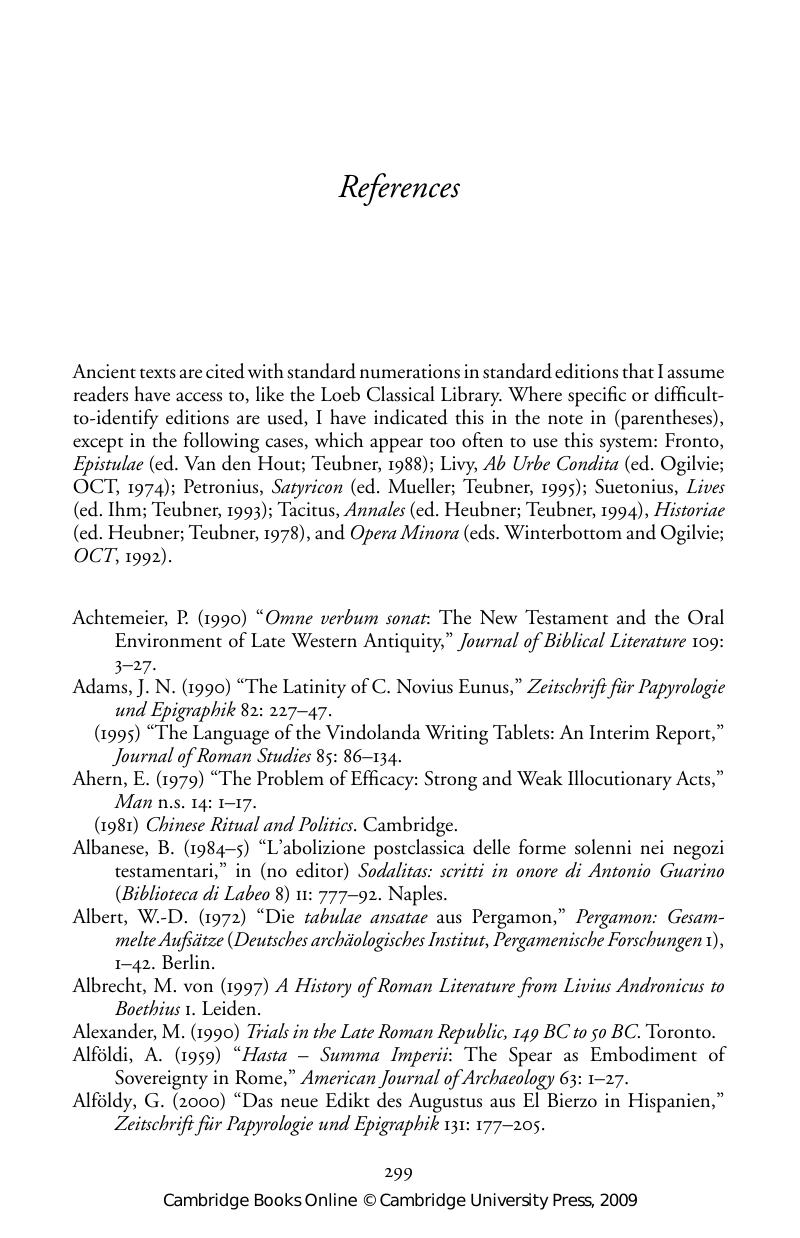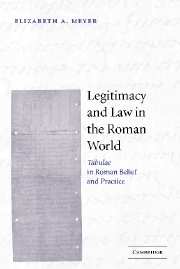References
Published online by Cambridge University Press: 22 September 2009
Summary

- Type
- Chapter
- Information
- Legitimacy and Law in the Roman WorldTabulae in Roman Belief and Practice, pp. 299 - 340Publisher: Cambridge University PressPrint publication year: 2004

